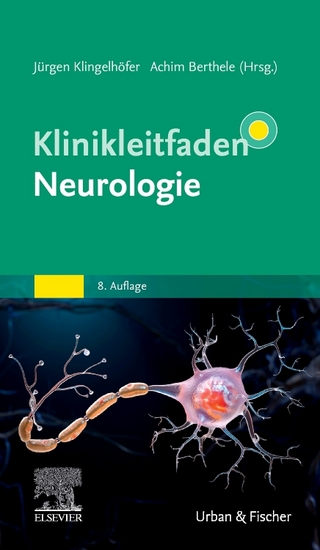
Pediatric Epilepsy Surgery Techniques
Academic Press Inc (Verlag)
978-0-323-95981-0 (ISBN)
Dr. Fallah is a paediatric neurosurgeon at UCLA Mattel Children's Hospital. He is the Director of Pediatric Neurosurgery at UCLA Mattel Children’s Hospital and an Assistant Professor of Neurosurgery, and Pediatrics at the David Geffen School of Medicine at UCLA as well as an Assistant Professor in Health Policy & Management in the UCLA Fielding School of Public Health. He is also a member of the Brain Research Institute at UCLA. His clinical practice is devoted to the surgical management of children with medically intractable epilepsy. His research mission is to establish high-quality clinical evidence to use towards the development of guidelines and decision-making tools that can standardize decisions and improve the surgical care to treat childhood medically refractory epilepsy. Dr. Fallah is the lead author of several multi-center studies focused on pediatric epilepsy surgery and serves as a professional advisory board member of the Tuberous Sclerosis Alliance and a Regulatory Advisory Board Member of the Global Pediatric Epilepsy Surgery Registry. Dr. George Ibrahim is the Abe Bresver Chair in Functional Neurosurgery at the Hospital for Sick Children and Associate Professor in Surgery, Biomedical Engineering and Medical Science at the University of Toronto. He is a Scientist in the Program in Neuroscience and Mental Health at the Hospital for Sick Children Research Institute. He is the Surgical Director of the pediatric DBS program. Dr. Weil is a paediatric neurosurgeon at Sainte-Justine University Hospital and an Assistant Professor in both the Department of Surgery and Neuroscience at the University of Montreal. He is also a Surgeon-Scientist in the Brain and Child Development Axis at the CHU Sainte-Justine Research Institute. He leads a robust pediatric epilepsy surgery program at the Sainte-Justine University Hospital where he provides surgical treatment of medically intractable epilepsy in children. His clinical and research interests focus on reducing morbidity associated with pediatric epilepsy surgery through novel surgical approaches and evidence-based medicine. Dr. Weil is the co-principal investigator of several ongoing multi-center studies focused on comparing surgical approaches in pediatric epilepsy surgery.
Part 1: Evidence in pediatric epilepsy surgery
1. Evidence in pediatric epilepsy surgery
Churl-Su Kwon and Varun Ramanan Subramaniam
2. Controversies in the timing of pediatric epilepsy surgery—is earlier better?
Jarod L. Roland
Part 2: Invasive investigation
3. Electroencephalographic evaluation of epileptogenicity—traditional versus novel biomarkers to guide surgery
Eroshini Swarnalingam and Julia Jacobs
4. Invasive monitoring: stereoelectroencephalography (sEEG) versus subdural electrode (SDE) versus hybrid evaluation
Taylor J. Abel, Luis Fernandez and Joseph Garcia
Part 3: Resective or ablative surgery
5. Intraoperative adjuncts to optimize the surgical treatment of drug-resistant epilepsy—do new tools improve outcome?
Trang Tran, Frederic Leblond and Roy W.R. Dudley
6. Medial temporal lobe epilepsy—selective amygdalohippocampectomy versus anterior temporal lobectomy
Christian Dorfer
7. Epilepsy in eloquent cortex: resection versus responsive neurostimulation
Saadi Ghatan
8. Lesional epilepsy: lesionectomy versus ECoG-guided resection
Shimrit Sibony-Uliel and Jonathan Roth
9. Insular/perisylvian epilepsy: Open resection versus stereotactic ablation (MR-guided laser ablation/radiofrequency thermocoagulation) versus responsive neurostimulation
Vincent Joris, Jessica Royer and Alexander G. Weil
Part 4: Hypothalamic hamartoma
10. Hypothalamic hamartoma—open surgery versus endoscopic surgery versus stereotactic radiosurgery versus stereotactic ablation (MR-guided laser ablation/Radiofrequency ablation) versus MRFUS
Santiago Candela-Canto, Roberto Martınez Alvarez and Jose Hinojosa Mena-Bernal
Part 5: Tuberous sclerosis complex
11. Resective surgery in tuberous sclerosis complex-related epilepsy: tuberectomy and tuberectomy plus
Shuli Liang, Zhirong Wei, Jiaqi Wang and Feng Zhai
Part 6: Disconnective procedures
12. Functional hemispheric surgery—vertical versus lateral approach
Jia-Shu Chen, H. Westley Phillips and Aria Fallah
13. Minimally invasive hemispherotomy—endoscopic, radiofrequency and robotic techniques
Poodipedi Sarat Chandra and Manjari Tripathi
14. Lobar/multilobar epilepsy: resection versus disconnection
Vejay N. Vakharia and Martin M. Tisdall
15. Corpus callosotomy: anterior two-thirds (two-stage) versus complete (one-stage)
Meena Vessell and Robert J. Bollo
Part 7: Neuromodulation
16. Temporal lobe epilepsy with preserved function: multiple hippocampal transection versus neuromodulation (deep brain stimulation, responsive neurostimulation)
Logan Massman and Sean Lew
17. Neuromodulation: comparison of vagus nerve stimulation, deep brain stimulation, and responsive eurostimulation
Nebras M. Warsi, Hrishikesh Suresh and George M. Ibrahim
| Erscheinungsdatum | 20.11.2024 |
|---|---|
| Verlagsort | Oxford |
| Sprache | englisch |
| Maße | 152 x 229 mm |
| Themenwelt | Medizin / Pharmazie ► Medizinische Fachgebiete ► Neurologie |
| Medizin / Pharmazie ► Medizinische Fachgebiete ► Pädiatrie | |
| ISBN-10 | 0-323-95981-4 / 0323959814 |
| ISBN-13 | 978-0-323-95981-0 / 9780323959810 |
| Zustand | Neuware |
| Haben Sie eine Frage zum Produkt? |
aus dem Bereich


